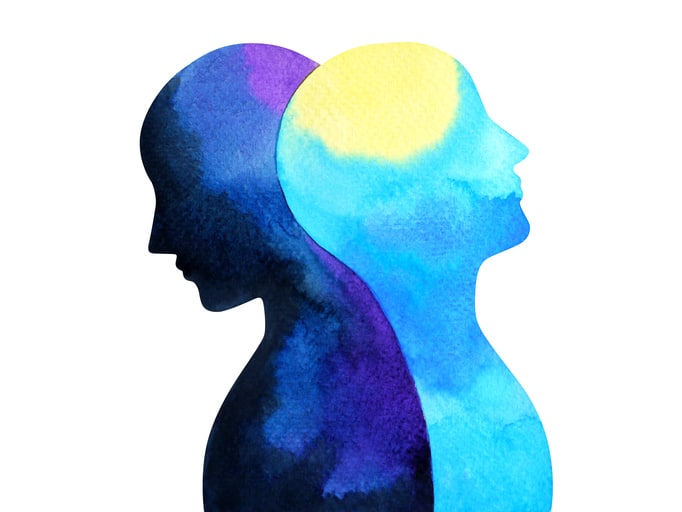The National Institute of Mental Health Research Domain Criteria (RDoC) initiative aims to establish a neurobiologically valid framework for classifying mental illness. Here, we examined whether the RDoC construct of Reward Learning and three aspects of its underlying neurocircuitry predicted symptom trajectories in individuals with mood pathology.
Aligning with the RDoC approach, we recruited individuals [n=80 with mood disorders (58 unipolar, 22 bipolar) and n=32 controls; 63.4% female] based on their performance on a laboratory-based reward learning task, rather than clinical diagnosis. We then assessed (1) anterior cingulate cortex prediction errors using electroencephalography, (2) striatal reward prediction errors using functional magnetic resonance imaging, and (3) medial prefrontal cortex glutamatergic function (mPFC Gln/Glu) using H magnetic resonance spectroscopy. Severity of anhedonia, (hypo)mania and impulsivity were measured at baseline, 3 months and 6 months.
Greater homogeneity in aspects of brain function (mPFC Gln/Glu) was observed when individuals were classified according to reward learning ability rather than diagnosis. Furthermore, mPFC Gln/Glu levels predicted more severe (hypo)manic symptoms cross-sectionally, worsening (hypo)manic symptoms longitudinally, and explained greater variance in future (hypo)manic symptoms than diagnostic information. However, rather than being transdiagnostic, this effect was specific to individuals with bipolar disorder. Prediction error indices were unrelated to symptom severity.
Although findings are preliminary and require replication, they suggest that heightened mPFC Gln/Glu warrants further consideration as a predictor of future (hypo)mania. Importantly, this work highlights the value of an RDoC approach that works in tandem with, rather than independent of, traditional diagnostic frameworks.
Mapping disease course across the mood disorder spectrum through a Research Domain Criteria (RDoC) framework.


